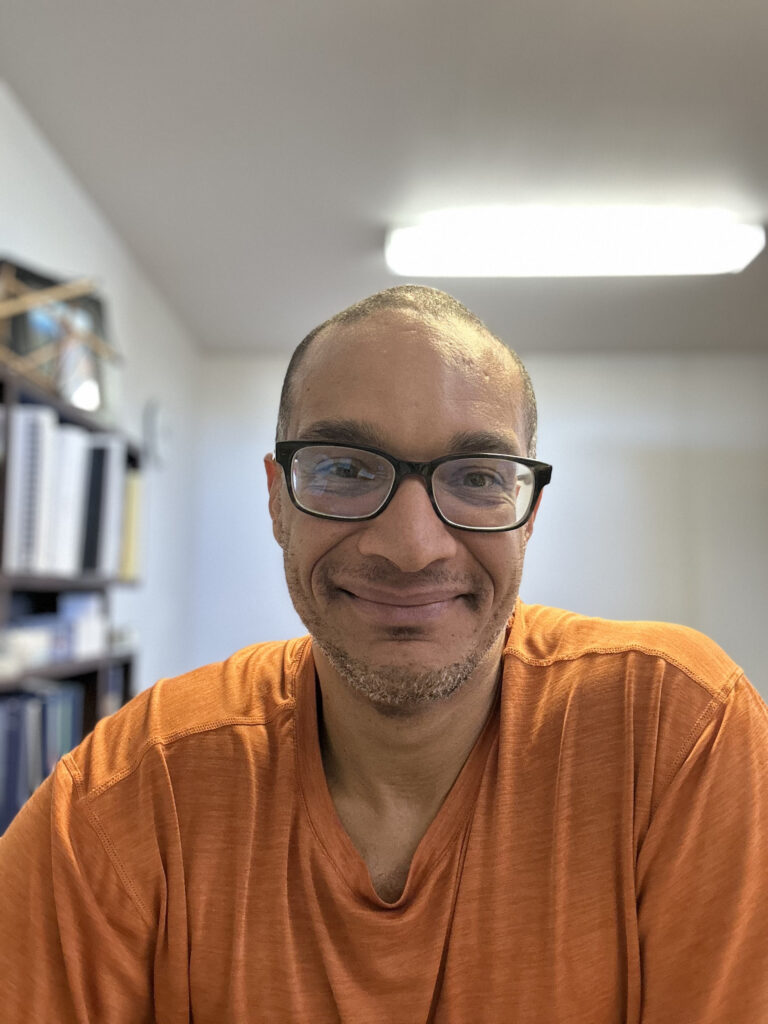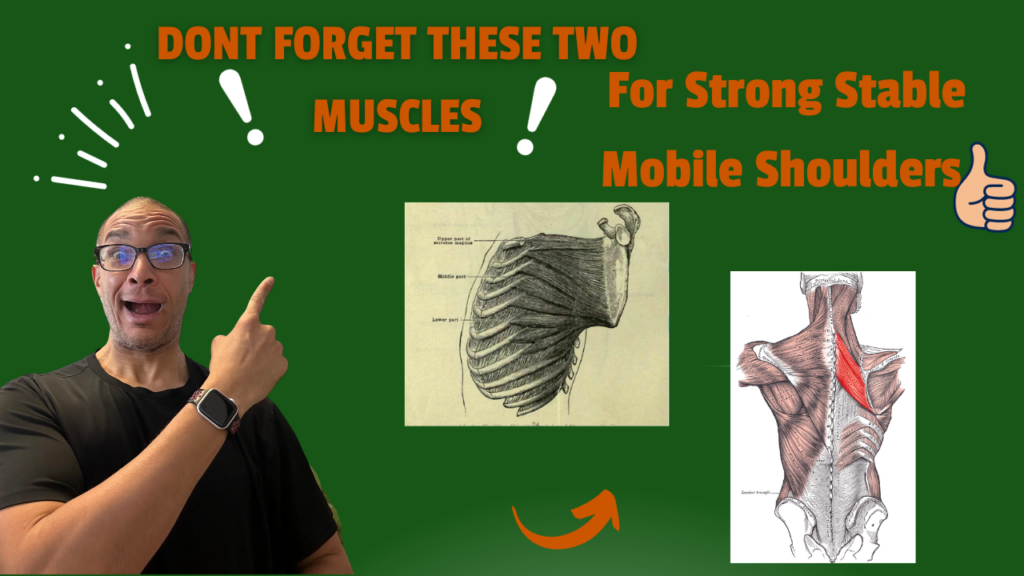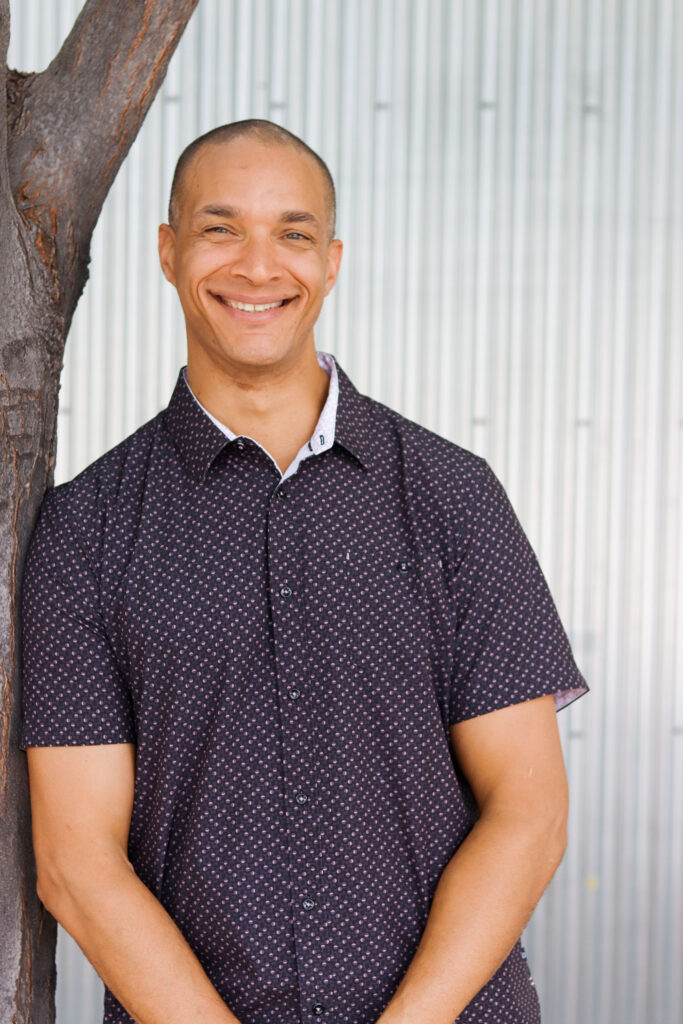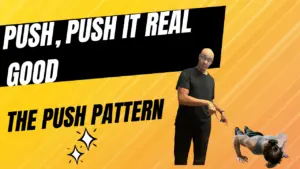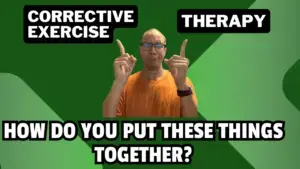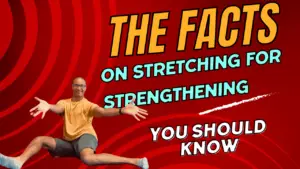The iliopsoas muscle, or psoas, is a really important muscle that can also cause a lot of problems. Illipsosas can cause bursitis pain, hip pain, pelvic dysfunction and low back pain. And just looking up iliopsoas stretches or iliopsoas strengthening exercises wont give you the full view of what to do. So tune in to learn more about the iliopsoas muscle and how best to work with it.
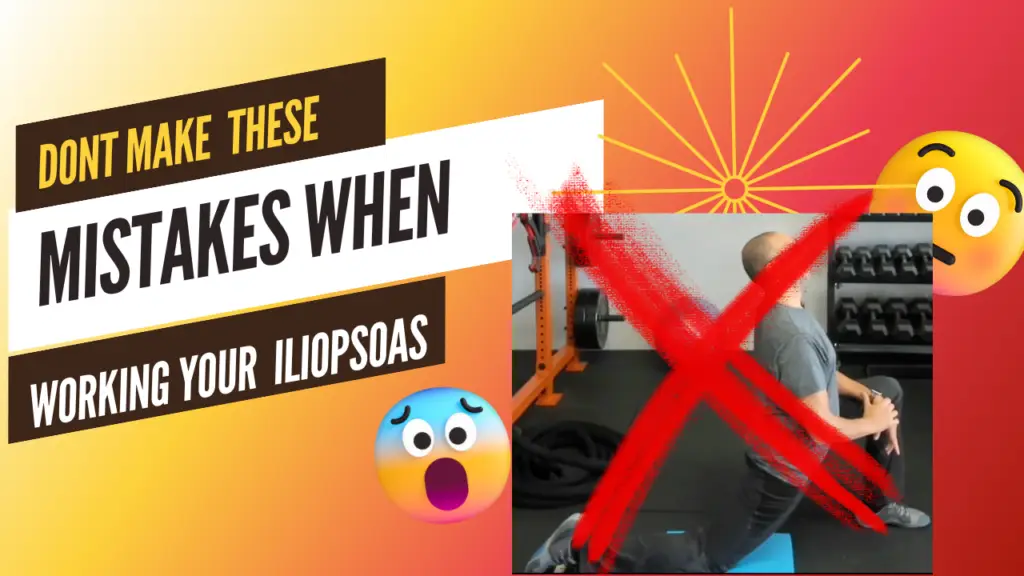
Click on the image to watch
Is your iliopsoas, or some people just call it the psoas, tight or weak and causing you issues? Chances are, if it is, what’s traditionally given to people and what you find on the internet, which is basically the same thing, is not the most effective. I want you to stay tuned because the psoas, iliopsoas is much more complex than you think, and so a lot more can be done to it than what’s traditionally given to you. Greetings, I’m Ekemba Sooh, I’m the owner of Solcore Fitness and I’m a Soma therapist and Soma trainer, and I’ve been in this field for about 30 years.
Within that 30 years, like 17, 18 of them, I’ve been studying underneath the osteopathic model. Once I started to study under this model, I realized there’s much more to the body than what’s traditionally being shown to people. There’s a lot more different directions the muscles go, a lot more connections that we’ve ever seen, which means there’s a lot more ways to work with the body. It’s called holistic. Everything is interdependent and interconnected. We want to think about how the body functions so we can train it and treat it best. That’s what I talk about it in this channel, holistic. If you want to hear more about this, then subscribe to the channel. If you like this video, please give a thumbs up. It tells the algorithm that it’s good so more people can get benefit to watch it and don’t forget to share it with your friends.
The psoas muscle is actually called the iliopsoas muscle. Iliac is a part of it. There’s a bunch of different attachments, not just from your hip into your spine, there’s a lot more. You have a psoas part which is attached to three places. You have your lesser trochanter, and then you have at the middle of the spine at the body we say anterior medial, anterior meaning front medial means middle, and then you have the posterior meaning back and lateral to the side. That’s three. Then you have an iliac portion, which is in the hip. You have a minor part toward the down low and a major part up high, and then you have a little tiny muscle or even there’s a ligament called your psoas minor.
So you can see there’s a lot of different places that you can work with and the psoas has a lot of different jobs. Those jobs need to be performed properly. It can’t be performed properly if it’s tight or weak. So you may have things like an overarching of the back. You may have also your pelvis moving forward. You may have compression of your spine. You may have your hip moving in bad place like external or internal rotation. It could throw off a lot of things. In the osteopathic model, we say the psoas is a true tensegrity muscle because it connects the leg, the hip, and the spine. It connects all three. That’s why it’s super important. Now, when you search around for the psoas, you find more basic information anatomically and you may find some interesting information about spirit and stuff. I can’t talk about that. I’ve never studied about it. I guess it’s true.
I’m here to talk about more of the physiological components of the psoas. It’s really good to know the different places the psoas goes just like every muscle, they go a lot more places than people really think, because if I know which way muscle goes, I know which way I can strengthen it or stretch it because I want to see where the fibers go. Okay, the fibers go here. Whether I can go this way to strengthen it, I can move away from it to stretch it at a basic level. If it has these different attachments, then you need to think about the different places it attaches to and the different ways that the muscle fibers go.
But it’s more important to think about the muscle in terms of Hill’s Muscle Model. Hill’s Muscle Model says you need three components. You need the muscle, you need the fascia, you need the ligament or joint. You need these three aspects to work properly so it functions properly. It’s not just about working the muscle. In all muscles you have an epimysium, a perimysium, and an endomysium. Those are fancy names for fascia that goes between the muscle fibers and muscles. Those muscle fibers and muscle fascia go out toward the outside and connect to the muscle ligament. That ligament generally connects to a bone, but it’s not the bone, it’s the periosteum. Again, another fancy name for the fascia that surrounds the bone, which means if those layers of fascia go out to ligaments, which connect to the fascia and the bone, that means it connects everywhere, and that’s what your fascia does. It connects everywhere. Like you have one fascia that connects a thousand different places like a spiderweb.
When you think about the psoas, you think, oh, well, if it connects in that chain, then that chain must be down to the leg, up to the pelvis, and up to the spine because those are the three components of the psoas. The fascia iliaca, again, another fancy name for fascia, that surrounds all that connects to a lot more. Most importantly, it can connect to pelvic fascia. If you have a tight muscle, a tight psoas, you can have pelvic issues. It connects to the spine, but also connects to very importantly all the internal organs [inaudible 00:05:23], which means, again, if you have a tight or weak psoas, yes you have a tight, weak psoas, but you can also have some visceral problems. That’s the most important part and that’s the way to view this holistically.
Are you struggling with psoas or iliopsoas issues? Well, what are you doing? Let me know in the comments. I’d love to have a conversation with you and I want you to stay tuned and I’ll go through what people traditionally do for the psoas and what I feel is a little more important to do. A big thing people do is when they have psoas issues is they think they have to go straight to stretching, that’s not totally true and I’m going to get to that in a minute. They think that because it feels tight and it could be, but it could also be weak. If you look on the interweb, the big thing you see for the psoas is this posture, and you see it in physical therapy and you also see it in yoga. I’m not quite sure why you see it in both places, they’re two different aspects, but it’s the same thing. They’ll kneel, they put their hand here, they arch their back and they slide forward because they think, “Oh, I’m just stretching my psoas, this part.”
That’s from that basic anatomy and basic biomechanics, basic, right here. It doesn’t attach here as we went through before. They attach to all those different places and it has all different things you need to do. When you do this position it doesn’t take into consideration a lot of different things. First and foremost, one of the psoas’ jobs is to externally rotate the leg. If I want to strengthen something, I go in the action. I’ll go in external rotation. If I want to stretch it, I’m going to go opposite, which is internal rotation. In this posture you can see the foot’s right behind the butt. That’s neutral. I have to go, my foot wide, so my leg internally rotates. That’s the first issue, just basic issue.
The second issue is they’re arching our back and sliding forward well. The psoas again, part of its normal position, if it’s not pathological, is to keep a nice lordotic lumbar curve. Well, now that’s an action. Now I’m enhancing the action as I kneel and go forward so I’m not doing the opposite action. I’m doing the action and more into it. First I’m not stretching it, I’m sliding forward and I’m not doing it. I would need to tuck my pelvis and flatten my back and get tall because again, the so job is to stick your butt out. An opposite would be to tuck your butt. The psoas’ job then also is to keep your spine pulled together, co-optation, so I want to get tall. Those are some basic reasons why this stretch does not work.
Some issues I have with that is that a lot of people have spinal problems, and so if I’m sliding forward like that one, I’m not doing anything for my psoas properly. Two, I’m compressing my spine more as I go back. If I have a disc herniation, that herniation can go, well, it normally goes for a lot of people backing out posterolateral, but because it’s a ball, because I have pressure on a ball, it’s called Pascal’s Law, that pressure can go omnidirectional, which means I kneel and slide forward that pressure could also go forward. It’s a potential. So that’s one issue I have with that.
The main issue though is that it’s not done fascially. Again, you just think about the muscle in a basic position, which means I want to make sure that I stretch fascially. To do so I need to make sure that I have those opposite biomechanical actions. I talked about, internal rotation of the hip, pelvis tucked nice and tall. But I also want to think about, oh, it’s connected to the rest of my body so you need to know about the biomechanics fascially of the body and do stuff to put tension throughout the chain of the body to stretch not only the psoas but the iliopsoas. Then you think about what different directions do I need to move my trunk and pelvis or leg or whatever to get those different attachments of the psoas? Because, again, if there’s all those different attachments, you can stretch them differently, not just one way.
If I want to start working the SOAs more holistically with all the different factors it needs, then first what we talk about is we literally stretch the iliopsoas in all different directions myofascially. That’s the best way I’ve found to normalizing the lengthening and the balance in the body. We also normalize the fascia by itself. You can do that by getting treated. You find a therapist like myself who knows how to work with the fascia and understands that that fascia iliaca has a normal amount of torsion twisting, but if it’s twisted too much like a towel, then I can’t pull it apart. Grab a towel and twist it as hard as you can and try and pull it. It doesn’t move. Untwist it, say halfway and pull, you can see it moves a little bit. That’s the same idea because again, that fascia envelops the muscle and goes within the muscle. If it’s too twisted, it won’t work properly. First I normalize the fascia.
Then also I think about Hill’s Muscle Model, and I think, oh, look, I need to strengthen the psoas so I have a muscle. You can only stretch a muscle if it’s there. I want to strengthen the psoas again in different directions, not just one way. Now I’m working with the psoas in all these different directions, now you’re working holistically, and now you think about the other areas the psoas is attached to and stretch those. Not the areas of the endpoint to the psoas, but if it attaches to the spine, okay, if you attaches to the spine, what else is there? My transverse spinalis, my longissimus, my iliocostalis, my lat, stuff like that. You work out because muscles don’t work alone. They work in conjunction with other muscles and other fascia. You build out a program to not only work with what you need to work with, but everything around it that can help it work.
I want to leave you with something to help you out. As we know, the psoas has a bunch of different attachments, connects fascially, a bunch of different ways you need to strengthen it and stretch it. I’m going to give you one little nugget here. Myofascial stretching is fantastic for balancing your body, but the one thing that I like better to lengthen the muscle is to do postural stretching. Postural stretching is to get into a posture and hang out, to not be active. With the psoas, you can do that. Again, do you do this? If you feel you’re comfortable with it, I’m not prescribing it to you at all, but you’re going to sit on something, as you can see in this little video I’m going to show you, on the edge of a bench or your bed or a treatment table like I’m doing, and you would lean back.
Now, when you lean back, you pick one side to work with, and so you hold the opposite knee and let that other knee drop down. Then you just hang out there because a postural stretch. There’s no activity besides get into a posture and hanging out. Allow that to hang as long as you want and then switch sides and do the other side. If you have a predominantly tight side, do that one first. Allow yourself to sit in this position for as long as you can handle it on that side. When you’re done, you gently switch by bringing that leg up and switch in a hold of the knee, and then you do the other side. Do that and have good luck.
That’s just a little bit of information on how to think about working with the psoas, but also the body differently. I could go on a lot longer about all this, about different biomechanics and ways of move and stuff like that, but this is not a lecture. This is to help you understand more about the work with it. If you want to understand more, then I got some resources for you. You can join my private Facebook group. In the description below there’s a link. Just click on the link, answer a few questions, agree to the terms and you’re in. It’s a dynamic, interactive way to work with me to find out more about how to work with your body holistically.
Or, if you want to find out more about all these different rules and ways to address a body that I’ve been talking about in this video, then have a free resource. It’s called To Get Mobile, Get Out of Pain, and Live the Life of Your Dreams. It’s four steps, but it talks about these different rules and the way things are connected and how to think about the body so you get a better view of what I’m talking about. Not a total view, but a better view. Then you can reread it again so you can get more and more knowledge. If you like what you heard and you want to work with your body this way, then reach out for a consultation. In the description below, you’ll find a link for the consultation. You click on it, you’ll be taken to my Calendly link. You find time that’s good for you, you pick it and we meet and talk.
I hope this is informational. If you like this information, I’ll make more videos on the psoas about this. Please give it a thumbs up if you like it and share it with your friends and I’ll see you next week.
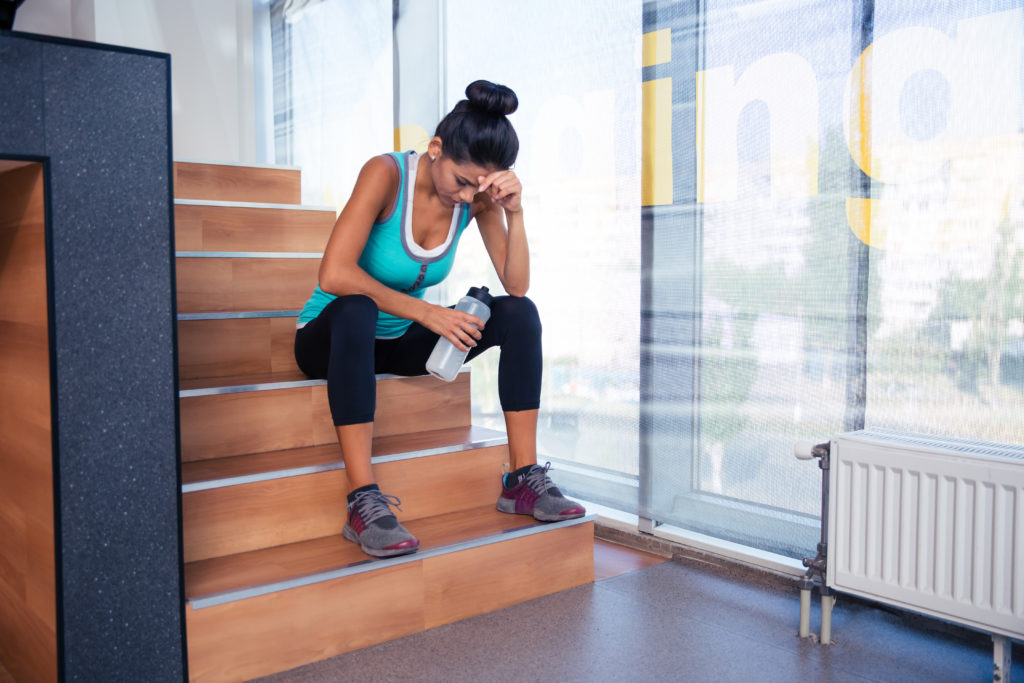
Move better, reduce pain & live life on your own terms
it’s not just working out, it’s building a foundation for a better life.
Find out more @
